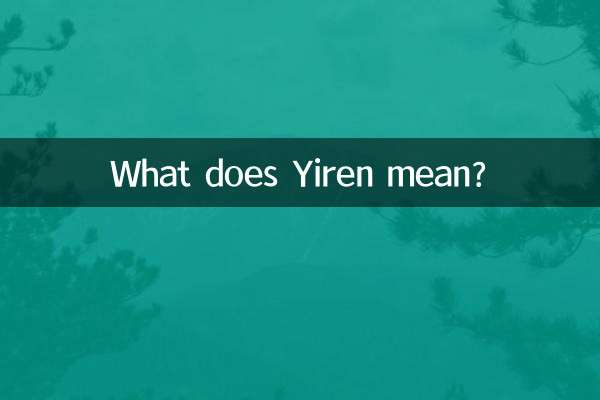What does a leaf belong to in the Five Elements?
The Five Elements Theory is an important part of ancient Chinese philosophy, covering the five basic elements of metal, wood, water, fire and earth. As a part of the plant, the five elements attributes of leaves are often discussed. This article will analyze the properties of leaves from the perspective of the five elements, and combine it with hot topics on the Internet in the past 10 days to present you a structured analysis.
1. Analysis of the five elements attributes of leaves

Among the five elements, leaves usually belong toWoodproperty. Wood represents growth, stretch and vitality, and leaves are the main organs of plants for photosynthesis, which is highly consistent with the characteristics of wood. The following is a detailed analysis of the relationship between leaves and the five elements:
| Five elements attributes | Corresponding characteristics | Ye performance |
|---|---|---|
| Wood | growth, expansion, vitality | Leaves promote plant growth through photosynthesis |
| fire | heat, energy | Leaves absorb sunlight and convert it into energy |
| earth | nourish, stabilize | Leaves fall and become soil nutrients |
| gold | convergence, change | Leaves turn yellow and fall off in autumn |
| water | flow, moist | Leaves participate in the water cycle through transpiration |
2. The relationship between hot topics on the Internet in the past 10 days and Ye
Combined with recent hot topics, Ye has triggered discussions in many fields. The following is the hot content related to Ye in the past 10 days:
| hot topics | Related content | heat index |
|---|---|---|
| Autumn health care | How to judge seasonal changes through leaf changes | ★★★★☆ |
| environmental action | Promotion of fallen leaf composting technology | ★★★☆☆ |
| Phytotherapy | Research into the medicinal value of specific leaves | ★★★☆☆ |
| urban greening | Combination of evergreen and deciduous tree species | ★★☆☆☆ |
| artistic creation | Popular trends in leaf vein paintings | ★★☆☆☆ |
3. The deep connection between leaves and the five elements
Judging from the interdependence of the five elements, leaves, as representatives of the wood attribute, have complex interactions with other elements:
1.Wood makes fire: The energy accumulated by leaves through photosynthesis can be considered a source of fire. Recent research has discussed how to convert plant biomass into energy more efficiently.
2.Muketu: The roots of plants will break through the soil, and the fallen leaves can enrich the soil, forming a cycle. In recent environmental topics, fallen leaf composting technology has attracted attention.
3.Jin Kemu: The phenomenon of leaves dying in autumn reflects the restraining effect of metal on wood. This is highly relevant to the recent topic of seasonality.
4. Interpretation of the Five Elements of Ye in different cultures
Different cultures have their own understandings of the five elements attributes of leaves:
| cultural system | Five elements positioning of leaves | unique perspective |
|---|---|---|
| Chinese tradition | Main wood, both fire and earth attributes | Emphasis on leaf growth and withering cycles |
| Japanese culture | Focus on wood and earth | Pay attention to the aesthetic value of fallen leaves |
| Western elements theory | Attributed to the element of air | Pay attention to the interaction between leaves and air |
5. Leaves and the five elements from the perspective of modern science
Modern scientific discoveries have interesting echoes with the Five Elements Theory:
1. The discovery of chloroplasts confirmedWood propertiesvitality characteristics.
2. Energy conversion in photosynthesis reflectsfire attributecharacteristics.
3. Transpiration demonstrateswater propertiescycle process.
4. The discoloration and falling off of leaves in autumn reflect themetallicityconvergence characteristics.
5. Decomposition of fallen leaves to nourish the soil is completedsoil propertiescycle.
6. Conclusion
Leaf mainly belongs to wood among the five elements, but its interaction with other elements is also worthy of attention. By analyzing recent hot topics, we found that discussions on the attributes of leaves are not limited to traditional cultural fields, but also extend to many modern issues such as environmental protection, health care, and art. Understanding the five elements of leaves can help us gain a deeper understanding of the laws of nature and the cycle of life.
Judging from the hot spots on the Internet in the past 10 days, the research and application of leaves are expanding to a wider field. This is not only a modern interpretation of the traditional Five Elements Theory, but also a vivid embodiment of the harmonious coexistence between humans and nature.

check the details

check the details